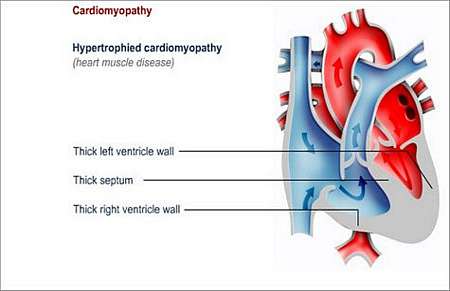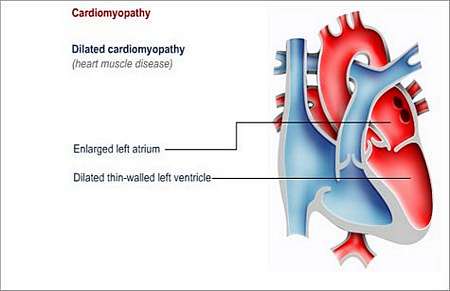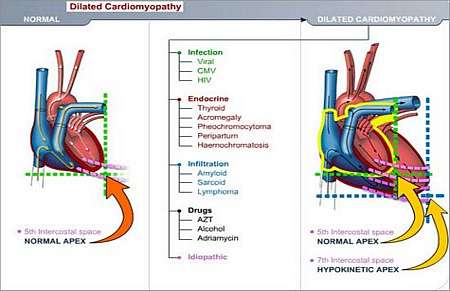What is CARDIOMYOPATHY?
Cardiomyopathy represents a disease of the heart that primarily affects the heart muscle (myocardium). In the primary type, the cause is unknown. In the secondary type
- The cause is known, and
- It may form part of other disease processes that involve other organ systems in the body


Why does this happen and how may it affect the patient’s health? In the primary type, the cause or reason for developing is not known (genetic predisposition); it may be
- Familial
- Idiopathic (cause not known), or
- Due to fibrosis of the heart muscle
In the secondary type, it could develop as a result of disease in other parts of the body or due to exposure to certain drugs. Conditions that may cause this, include
- Rheumatoid arthritis
- Polyarteritis nodosa
- Radiation exposure
- Infections with viruses, fungi or bacteria
- Iron overload (Haemochromatosis)
- Cancer
- Amyloid disease
The basic types of cardiomyopathies include
Restrictive cardiomyopathy
- The ability of the heart chambers (ventricles) become restricted due to infiltration of the heart muscle with a disease process such as cancer, amyloidosis, or sarcoidosis
Hypertrophic cardiomyopathy
- The left lower heart chamber wall (left ventricle) undergoes disproportionate thickening (hypertrophy)
- This inhibits effective and normal functioning
Dilated cardiomyopathy
- The left lower heart chamber (left ventricle) dilates abnormally causing conditions such as irregular contractions, heart failure and emboli (clots) to the brain and lungs

What symptoms may the patient experience?
- Heart walls become rigid
- There is abnormal and ineffective contraction and dilation
- Impeded filling of ventricles
- The patient tires easily, especially during exercise
- Difficulty in breathing (also when sleeping at night)
- Vague chest pain
- Abnormal heart sounds and heart murmurs appear
- Fainting spells
- Sudden death may occur
- Accumulation of fluid in abdomen (ascites)
- Liver becomes enlarged and tender
How is the diagnosis made and what special investigations are required?
- Chest X-ray (shows enlarged heart with dilated cardiomyopathy)
- ECG
- Heart sonar
- Catheterisation of the heart
- Endomyocardial biopsy (heart tissue analysis under microscope)
What is the treatment?
- Majority of patients die within 24 months from onset of symptoms
- Sudden death is a possibility
- Anticoagulation therapy to prevent emboli (clots to brain and lungs)
- Treat heart failure and irregular heart rate
- In some patients, an implantable automatic defibrillator will be necessary to restart the heart when it stops beating
- Surgical correction of the heart muscles
- Pacemaker for heart
- Regular follow-up with cardiologist
© 2003 Prometheus™ Healthcare (Pty) Ltd
|